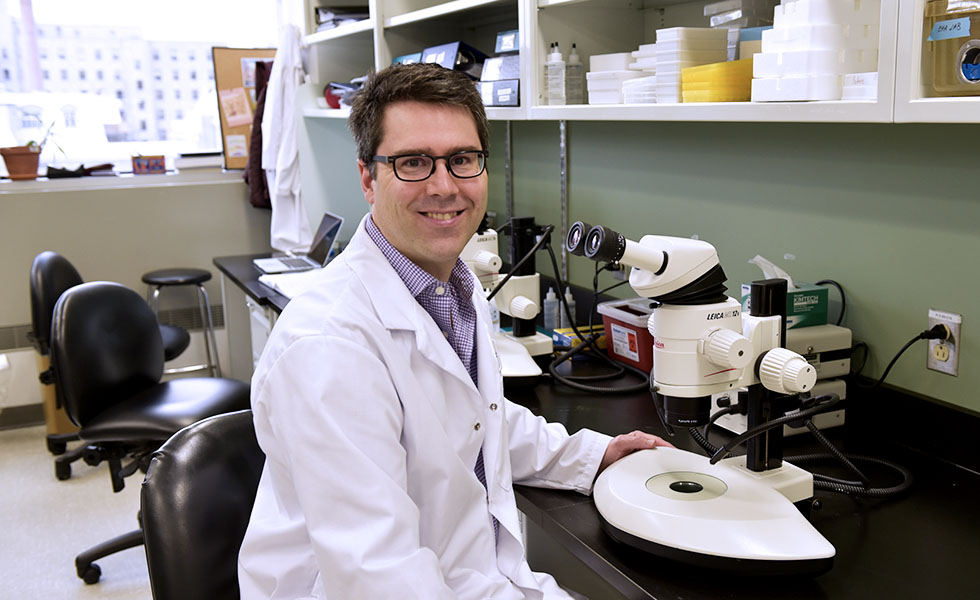
Similar to electrical cables, nerves are important for wiring together different parts of our body. For example, in order to elicit walking, our brain is wired to our spinal cord, which is wired to our legs. Understanding how the nervous system is wired during embryo formation could help promote the reconnection of injured nerves to their target in neurodegenerative diseases, such as Parkinson’s disease, or after an injury, such as a spinal cord lesion.
It is with this in mind that a team of researchers from the Montreal Clinical Research Institute (IRCM) led by Frédéric Charron, in collaboration with a team of researchers from Rockefeller University and Stanford University led by Marc Tessier-Lavigne, recently published an article in the scientific journal Neuron about an important mechanism involved in the formation of nerve circuits.
A nerve is composed of many microscopic cables called axons. During embryo formation, axons grow and connect to the appropriate target due to their growth cone, which is a motile structure at the tip of an axon responsible for detecting guidance cues.
One of these guidance cues is called netrin. Despite the identification of netrin over 20 years ago, many questions remain regarding how netrin works to guide axons. The laboratory of Dr. Charron, IRCM Research Professor and Research Professor in the Department of Medicine at Université de Montréal, together with the laboratory of Dr. Tessier-Lavigne, Professor in the Department of Biology at Stanford University, showed that netrin can act at a distance to attract axons during embryo formation. This means that netrin acts not only locally, where it is produced, but also farther away than its site of production.
“To use an analogy, let’s say someone is cooking a meal that smells delicious,” explains Dr. Charron. “Another person entering the house is likely able to walk to the source of the smell, even with his or her eyes closed. That’s because the molecules of odour emanate from the dish and travel in the air. Obviously, more odour molecules will remain near the dish and less will travel farther away. This difference in concentration is called a gradient. Our nose can detect gradients of odour molecules and indicate where the source is. Remarkably, growth cones use a similar method to detect gradients of guidance cues in the embryo, and this leads to their attraction to their target.”
About the study
The research project was carried out at the IRCM Molecular Biology of Neural Development Research Unit by Shirin Makihara, Patricia T. Yam, Nursen Balekoglu and Frédéric Charron, together with Zhuhao Wu, Shaun Teo, Nicolas Renier and Olav Olsen from the laboratory of Marc Tessier-Lavigne at Rockefeller University and Stanford University. Juan Antonio Moreno-Bravo from the laboratory of Alain Chédotal at Université de la Sorbonne also contributed.
The research performed in the laboratory of Dr. Charron received financial support from the Canadian Institutes of Health Research, the Fonds de recherche du Québec – Santé, the Canada Foundation for Innovation and the Canada Research Chairs Program.
'



